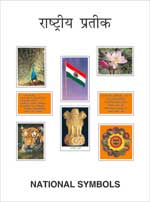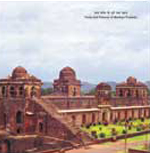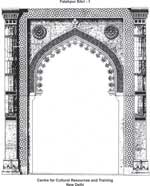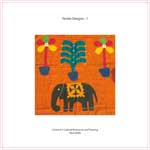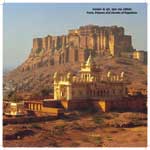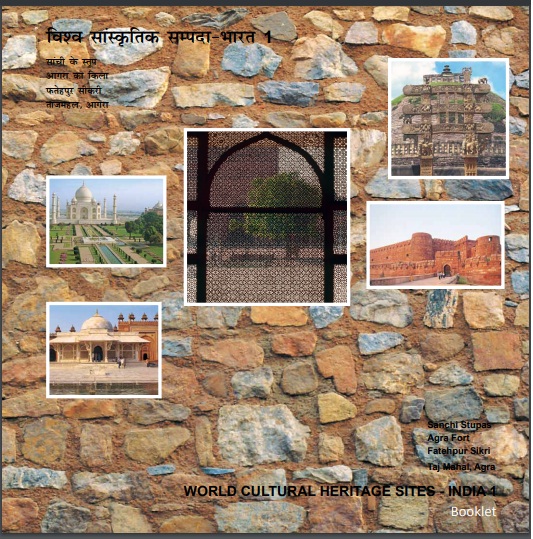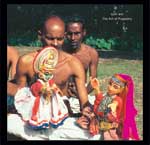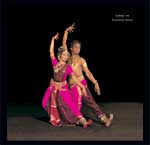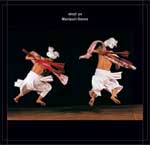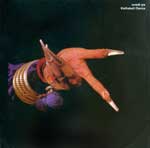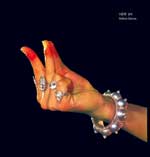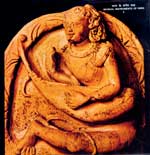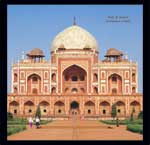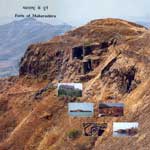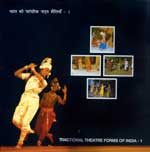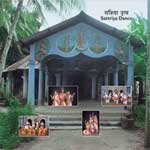
Cultural Package
National Symbols
(8 booklets) CCRT/CP/1
An attempt has been made in these booklets to give a brief historical background of the national symbols of free India.
- National Flag – Chakradhvaja ( Including booklet on National Flag Code )
- National Anthem – Jana-Gana-Mana
- National Song – Vande Mataram
- National Animal – Tiger
- National Bird – Peacock
- National Flower – Lotus
- National Calendar – Saka Era
- National Emblem – Sarnath Lion – Capital of Ashoka
Forts and Palaces of Madhya Pradesh
CCRT/CP/3
Madhya Pradesh has the Vindhya and Satpura range of mountains, which were ideal for the construction of impregnable forts like Gwalior, Asirgarh, Kalinjar, Mandu etc. This package contains 24 illustrated picture cards along with write-up’s and a booklet, which provides general information and creative activities for students and teachers.
Fatehpur Sikri 1 and 2
CCRT/CP/8
The township of Fatehpur Sikri was built by the great Mughal emperor Akbar who ruled between 1556-1605 A.D. It is one of the most exquisite example of architectural design, calligraphy, carving and jali work. Geometrical and floral motifs in all their glory have been etched on the walls of this complex with great delicacy and aesthetic sensibility by the artisans of yore.
There are two packages on Fatehpur Sikri, which are based on a portfolio on Indian Architectural Design, Part I, Fatehpur Sikri has been prepared under the direction of Edmund W. Smith of the Archaeological Survey North West Provinces and Oudh, (Nainital, 1897). Since this portfolio is now largely inaccessible, CCRT is presenting some drawings in two sets of folios. The first set contains drawings of the Turkish Sultana’s House, Rajah Birbal’s House, and Jodh Bai’s Palace. The second set contains drawings of the Jami Masjid. Salim Chishti’s Tomb, the Baland Darwaza, and Islam Khan’s Tomb.
Textile Designs 1 and 2
CCRT/CP/20
India is famous for the excellence it has achieved in the rich variety of textiles. Most of the Indian textiles can be commonly classified under the category of the fibre used, such as cotton, wool, silk; the process employed for weaving such as types of looms; the method used for ornamentation such as printing, embroidery, painting and dyeing.
Each set contains 12 illustrated picture cards. The first set displays the traditional blend of weaves, motifs, colours and textures of textiles of Kashmir, Himachal Pradesh, Punjab, Rajasthan, Gujarat and Maharashtra and the second set that of Andhra Pradesh, Karnataka, Tamil Nadu, Assam, Tripura, Manipur, Bengal, Orissa and Arunachal Pradesh.
Forts, Palaces and Havelis of Rajasthan
CCRT/CP/4Rajasthan situated in the western region of India is the cradle of distinctive Rajput culture and traditions. From the 7th to 9th century A.D., the history of Rajasthan witnessed the rise and fall of the Rajputs. This set contains 24 illustrated picture cards of the most imposing and magnificent forts and palaces of Rajasthan. The booklet provides general information and creative activities for school students and teachers.
Purulia Chhau
CCRT/CP/16
The Chhau dances are very popular in Bengal. Bihar and Orissa. Purulia is the name of a district in West Bengal. ‘Chhau’ is a generic term. There are various styles of Chhau dances. Of these Purulia, Seraikella and Mayurbhanj are most popular. The main difference among these dance styles lies in the use of masks. Purulia Chhau is traditionally performed in the open air and on level ground. The performance begins with an invocation to Lord Ganesha. In the repertoire of Purulia
Chhau, there are several dance numbers which are based on episodes from the Mahabharata and a few Puranas. Musical instruments played a very vital role during this dance performance.
This Cultural Package contains 24 illustrated picture cards displaying different kinds of masks, costumes, dance movements and musical instruments. The booklet provides information on the kinds of Chhau dances, the areas where they are popular, their origin, nature, timing, theme, and creative activities for school students and teachers.
Traditional Toys
CCRT/CP/21
Toys have a special appeal and fascination for children and play a major role in fulfilling the need of the individuals creative expression. The traditional figures and toy-like artifacts have existed through out the centuries. CCRT has produced a cultural package on Traditional Toys depicting animals, birds, fishes, human figures and so on. This package provides inspiration to understand the aesthetics and beauty, the traditional technology and mechanics in the vast variety of toys available in all regions of this country.
This set contains 24 illustrated picture cards showing the various types of toys made of terracotta, grass, wood, cloth, paper, metal, shell, and glass. The booklet provides general information on the historical background of the traditional toys and creative activities for school students and teachers.
World Cultural Heritage Sites – India 1, 2, 3 and 4
CCRT/CP/7
Rajasthan The General Council of UNESCO in 1972 adopted the “Convention concerning the Protection of the World Natural and Cultural Heritage.” The aim of the Convention was to promote cooperation among all nations and people in order to contribute effectively to the protection of the natural and cultural heritage, which belongs to all mankind. In this context, the UNESCO has declared 16 Sites as World Cultural Heritage Sites in India. The CCRT has produced four cultural packages on these 16 World Cultural Heritage Sites in India.
Each set contains 24 illustrated picture cards with detailed description of each picture along with a booklet. The first set gives information about Sanchi, Agra Fort, Fatehpur Sikri and Taj Mahal.The booklet provides architectural terms and plans of stupa, mosque, temple and church.
The second set gives information about Sun Temple-Konarak, Khajuraho, Qutub Complex and Humayun’s Tomb-Delhi. The booklet provides architectural terms and plans of stupa, mosque, temple and church.
The third set gives information about Ajanta Caves, Ellora Caves, Elephanta Caves, and Churches and Convents of Goa. The booklet provides architectural terms and plans of stupa, mosque, temple and church.
The fourth set gives information about the Mahabalipuram Monuments, Brihadesvara Temple-Tanjore, Pattadakal Temple and Hampi Monuments. The booklet provides architectural terms and plans of stupa, mosque, temple and church.
Art of Puppetry 1 and 2
CCRT/CP/18
In these packages the CCRT presents illustrated picture cards along with write-ups on traditional puppets. India has a large variety of such puppets depicting various characters from legends and myths. Only a few have been selected keeping in mind representation of the various categories.
Each set contains 24 illustrated picture cards along with a booklet giving general information about the simple techniques of making and manipulating different types of puppets such as rod puppets, string puppets, shadow puppets and glove puppets.
Kuchipudi Dance
CCRT/CP/9
Kuchipudi, originally from Andhra Pradesh, is one of the classical dances of India. It’s evolution can be traced to traditional dance – drama, known under the generic name of Yakshagaana. In 17th century A.D. Siddhendra Yogi, a talented Vaishnava poet, conceived Kuchipudi style of Yakshagaana. It begins with an invocation to Lord Ganesha followed by nritta (non-narrative and abstract dancing); shabdam (narrative dancing) and natya. In this cultural package Raja Reddy and Radha Reddy, renowned Kuchipudi dancers have depicted various forms of nritta, shabdam and natya.
This package contains 24 illustrated picture cards along with brief description of dancer’s mudra, bhava, style, dress, and make-up. The booklet provides general information about the origin of dance forms in India and the historical background of the Kuchipudi dance and creative activities for school students and teachers.
Bharatanatyam Dance
CCRT/CP/10
Bharatanatyam is considered to be over 2000 years old. In Bharata Muni’s Natya Shastra Bharatanatyam is described as ekaharya in which one dancer depicts many roles. Siva as Nataraja, the Lord of Dance is depicted in various dance forms.
This set contains 24 illustrated picture cards along with brief description of various dance forms of Bharatanatyam like Alarippu, Jatiswaram, Nritya, Tillana and the booklet provides general information about the Indian dances and the origin of the Bharatanatyam dance, its development and creative activities for school students and teachers.
Manipuri Dance
CCRT/CP/11Manipuri, one of the classical dances of India, originated in Manipur, the north-eastern state of India. The people of Manipur have been protected from outside influences, and able to retain their unique traditional culture. Manipuri dance is associated with rituals and traditional festivals.
This set contains 24 illustrated picture cards along with brief description of various dance forms, rich costumes and the musical instruments. The booklet gives the general information about Indian dances, the origin and the present nature of the Manipuri dance and creative activities for school students and teachers.
Kathakali Dance
CCRT/CP/12Kathakali, one of the classical dances of India, has evolved from many social and religious theatrical forms of Kerala. It is a blend of dance, music and acting and dramatizes stories, which are mostly adapted from the Indian epics. Poet Vallathol, composed the classical Kathakali dance form.
This package contains 24 illustrated picture cards along with write-up’s displaying various dance poses, make-up methods, dress patterns and musical instruments. The booklet provides general information about Indian dances, the origin and the present nature of the Kathakali dance and creative activities for school students and teachers.
Kathak Dance
CCRT/CP/13Kathak dance, originally from Uttar Pradesh, is a combination of music, dance and narrative. The present day Kathak dance mainly depends on the medieval period Ras Lila, a local dance in the Braj region of Uttar Pradesh. Eventually popular Kathak became highly stylised in both Hindu and Muslim courts and came to be regarded as a sophisticated form of entertainment.
This package contains 23 illustrated picture cards along with write-up’s displaying the dancer’s hand gestures, facial expressions and the musical instruments. The booklet provides general information about Indian dances, the origin and the present nature of the Kathak dance and creative activities for school students and teachers.
Odissi Dance
CCRT/CP/14Odissi, originally from Orissa, is a dance of love and passion touching on the divine and the human, the sublime and the mundane. The Natya Shastra mentions the Odhra Magadha, which can be identified as the earliest precursor of present day Odissi. The dance is highly stylised and to some extent is based on the classical Natya Shastra and the Abhinaya Darpana.
This package contains 23 illustrated picture cards along with write-up’s displaying the facial expressions, hand gestures, body movements, dress patterns and the musical instruments. The booklet provides general information about Odissi dance, its origin and the form and style in which it is popular nowadays and creative activities for school students and teachers.
Expressions in Lines
CCRT/CP/22In this cultural package, the CCRT presents a small collection of floor designs popular in different parts of the country. They are varied and diverse in form and content. Stylised depictions of the sun, moon, birds, flowers and trees convey the message of happiness and well being of the household. This package contains 23 illustrated picture cards along with write-ups. The booklet provides general information about the floor designs and creative activities for school students and teachers.
Musical Instruments of India 1 and 2
CCRT/CP/19India is the inheritor of one of the most ancient and evolved music systems in the world. The evidence of music activity is found on the walls of cave paintings at Bhimbetka in Madhya Pradesh and the excavations of the Harappan civilization. Musical instruments are the tangible and material representation of music which is an auditory art.
The first set contains 22 illustrated picture cards along with write-up’s on stringed musical instruments and a booklet which provides general information about the evolution of music, different parts of stringed musical instruments and creative activities for school students and teachers. The second set contains 24 illustrated picture cards along with write-ups on wind instruments, percussion instruments and solid instruments. The booklet provides general information about the evolution of music, underlying principles of sound production based on the structure of instruments and the material used.
Architecture of Delhi
CCRT/CP/2
Delhi is one of the great cities of the world, with a tradition, which recedes into the legendary age of the Mahabharata epic. From 1911 AD onwards Delhi has been the capital of India. During the period from12th to 19th century AD the history of Delhi has witnessed the rise and fall of eight cities. They are: Quila Rai Pithora, Siri, Tughlaqabad, Jahapanahbad, Firozabad, Din Panah, Shahjahanabad and New Delhi. Various historical and cultural movements stand testimony to the rulers’ inclination towards art and architecture and craftsmanship of that time.
Architecture of Delhi package contains 22 picture cards and a booklet. From the picture cards, we can see the Sultanate, Mughal and British style of architecture. The booklet provides general information on style of architecture of Delhi, the patrons and the historical background and creative activities for school students and teachers.
Cultural History 1, 2 and 3
CCRT/CP/6
The artistic expression of the people through the ages is a valuable source of historical information. From paintings and sculptures, we come to know about the ancient people’s daily life. Scholars, artists and educationists in India have strongly recommended that Cultural Education should be included in schools to spread love and understanding for India’s rich cultural heritage. In order to provide supplementary material to teach Indian history, the CCRT has produced a set of three cultural packages on Cultural History.
Cultural History, I contains 24 picture cards and a booklet. The picture cards throw light on the ancient India’s seals, sculpture, stupa and temple architecture. The booklet provides general information, about the distinctive features of architecture, sculpture and paintings prevalent during the period between 8000 BC to 8th century AD approximately. Cultural History, 2 contains 24 picture cards and a booklet. The picture cards throw light on Mahabalipuram Rathas; Kanchipuram temple; Badami, Pattadakal temples; Khajuraho, Konarak temples and so on. The booklet provides general information about the distinctive features of the architecture, sculpture and paintings prevalent during the period between 7th and 16th century AD. Cultural History, 3 contains 24 picture cards and a booklet. The picture cards throw light on Sultanate and Mughal architecture. The booklet provides general information about the distinctive features of architecture. sculpture and paintings prevalent during the period between 7th to 16th century AD.
Forts of Maharashtra
CCRT/CP/5
Maharashtra is a land of forts. The 350 odd forts of Maharashtra stand as testimony to the history and success of the Marathas. The forts played a paramount role in the foundation, expansion and preservation of Maratha power. They have been classified into three types: Sthaladurg (Ground fort), Giridurga (Hill fort), Jayadurga (Marine fort). This package contains 24 illustrated picture cards and a booklet which provides general information, the historical and cultural background and distinctive architectural features of the forts of Maharashtra.
Traditional Theatre forms of India – 1 and 2
CCRT/CP/17
In traditional theatre, age-old forms, customs and the desire to improvise are intermingled. In these theatre forms, there is no such thing as episodes. There is always continuity in its theme, structure and presentation. There is also scope for improvisation and incorporation of new references leading to subtle extension in the story line. There is direct and intimate communication between the actors and audience. Traditional theatre forms have a common distinguishing feature that is the element of simplicity.
Each set contains 24 picture cards and a booklet. The first set provides information about the distinguishing features, origin, thematic content and theatre techniques of Bhand Pather, Swang, Nautanki, Raasleela, Bhavai, Jatra, Maach, Ankia Naat and Bhaona and that of the second set provides information about the unique features, theatre techniques and various kinds of musical instruments used during the performances of Tamaasha, Dashavatar, Krishnattam, Mudiyettu, Theyyam, Koodiyaattam, Yakshagaana and Therukoothu.
Sattriya Dance
CCRT/CP/15
The Sattriya dance form was introduced in the 15th century C.E. by the great Vaishnava saint and reformer of Assam, Shrimanta Shankaradeva as a powerful medium for propagation of the Vaishnava faith. He made the audience aware of the bhakti rasa, selfless devotion for the supreme being and introduced them to the art of harmonious living at a time when the society was ridden with religious malpractices and cryptic tantricism.
In this cultural package, CCRT has presented various facets of Sattriya dance such as hasta mudras, choreographic patterns, footworks, distinctive aharyas, musical instruments and a variety of headgear and jewelry.
CULTURAL PACKAGES
| S.No. | Title | Price |
|---|---|---|
| CCRT/CP/1 | National Symbols | 250 |
| CCRT/CP/2 | Forts and Palaces of Madhya Pradesh | 200 |
| CCRT/CP/3 | Fatehpur Sikri, 1 and 2 | 400 |
| CCRT/CP/4 | Forts of Karnataka | 200 |
| CCRT/CP/5 | Textile Designs, 1 and 2 | 400 |
| CCRT/CP/6 | Forts, Palaces & Havelis of Rajasthan | 200 |
| CCRT/CP/7 | Purulia Chhau | 200 |
| CCRT/CP/8 | Traditional Toys | 200 |
| CCRT/CP/9 | World Cultural Heritage Sites India, 1, 2, 3, and 4 | 800 |
| CCRT/CP/10 | Art of Puppetry, 1 and 2 | 400 |
| CCRT/CP/11 | Kuchipudi Dance | 200 |
| CCRT/CP/12 | Bharatanatyam Dance | 200 |
| CCRT/CP/13 | Manipuri Dance | 200 |
| CCRT/CP/14 | Kathakali Dance | 200 |
| CCRT/CP/15 | Kathak Dance | 200 |
| CCRT/CP/16 | Odissi Dance | 200 |
| CCRT/CP/17 | Expressions in Lines | 200 |
| CCRT/CP/18 | Musical Instruments of India, 1and 2 | 400 |
| CCRT/CP/19 | Architecture of Delhi | 200 |
| CCRT/CP/20 | Cultural History, 1, 2, and 3 | 600 |
| CCRT/CP/21 | Forts of Maharashtra | 200 |
| CCRT/CP/22 | Traditional Theatre Forms of India 1 and 2 | 400 |
| CCRT/CP/23 | Sattriya Dance | 200 |
